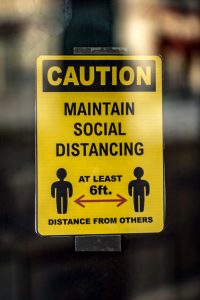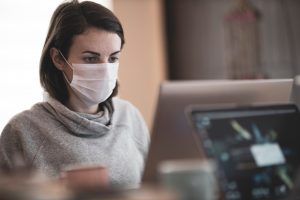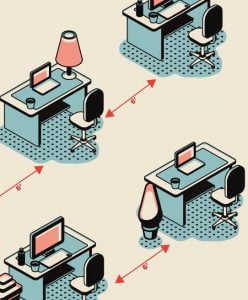Returning to Normal Operations After COVID-19 in British Columbia
Reduced Restrictions for Covid-19 in British Columbia
In British Columbia, our Premier announced on June 24th, 2020, that our Province is moving into Phase 3 and reduced restrictions. It is an intentional slow return as we reopen the economy, and limitations begin to loosen. Business owners still have many questions and issues to address from an operational and human perspective before returning to more regular work practices after Covid-19. It is entirely understandable that employees may remain fearful or worried due to the pandemic, whether they are physically in the workplace, or continue working remotely. The identification of employee stressors needs to be recognized and addressed to enable additional help or support.

Business Owners’ Concerns
The primary concern of business owners remains to be the importance of worker safety and the measures to put in place to reduce the risk of exposure to the virus. Safety plans are an essential component of the return to work protocol. They should outline guidelines, policies, and procedures that are put in place to reduce the transmission risk of COVID–19 in British Columbia.
There are multiple steps required in formulating an organizational COVID-19 Safety Plan, including the assessment of the workplace, submittal of the plan for approval to relevant provincial or national bodies, posting and communication of the plan to staff and clients, and the formation of a workplace COVID-19 safety committee to review the plan and make changes as necessary.
Although we are entering a period of reduced restrictions, we need to ensure that we do not become complacent. To ward off another spike in numbers, we have to be vigilant in containing the virus’s spread. Physical proximity measures and the frequent cleaning of potentially contaminated surfaces needs to be a priority. The fear of person-to-person transmission is heightened as individuals come into contact with more people, and spaces become busier.

Small- to large- businesses need to focus on the:
- Establishment and posting of occupancy reduced numbers
- Limit of essential people in the workplace
- Staggered start and end times of work
- Continuation of remote or off-site work arrangements, encouragement of virtual meetings and reallocation of tasks
- Workplace cleanliness and disinfection of entryways, reception areas, break rooms, meeting rooms, doorknobs, handrails, bathrooms, light switches, elevator buttons, etc.
- Rearranged floorplans to ensure workers are at least 6 feet in distance from colleagues, customers, clients and workspace visitors
- Installation of plexiglass barriers where necessary to assist in the maintenance of physical distancing
- Implementation of continued frequent handwashing and revised cleaning and disinfecting protocols to address the risk of surface transmission as more individuals are touching the same surfaces
- Layout of reception areas, high traffic thoroughfares and conference room set-ups
- Establishment of one-way walking paths in the office to help with traffic flow and keeping people better separated
- Personal safety requirements including the use of masks, and communication of how masks are required to be utilized and cared for them to ensure correct usage.
The Communication of New Policies
With all the precautions that are being considered and implemented, a crucial part of the plan lies in the communication and training of the new policies. Training can be as simple as releasing a video with new practices along with a written document, so there is a visual and written guide on expectations before individuals return to the workplace and ongoing communication to monitor what is and what is not working in the office space. A weekly safety review and update to the staff at the end of the week highlighting changes made and requesting input on any areas that need focus. Policies also need to be communicated on the potential steps required to take place if an illness arises in the workplace and how the working conditions will then be adjusted. Symptom identification is expected to be reported, and self-isolation is necessary until the individual is clear to come back to the workplace. A continuation of assessment, monitoring, and addressing of operational risks will continue for the foreseeable future.

What to Ask Employees to Ensure Safety
There is a great deal for employers to consider as they reassure employees of return to work safety measures, provide reassurance, and implement rigorous procedures to ensure staff and client safety. Four questions at a minimum to ask employees:
- Do you understand the revised company health and safety policies and protocols implemented to reduce the risk of COVID-19 in the workplace?
- How have the new procedures or protocols impacted how you work?
- What personal concerns or needs do you have in returning to the workplace? And once back in the workplace, what additional improvements would you recommend be implemented in the workplace to address health and safety COVID-19 transmission concerns?
- Can you identify areas of stress regarding returning to work, social distancing, or new policy and protocol measures to address your needs better?
Communication and training are essential components to the success of new measures being implemented in workplaces for employee safety, peace of mind, and reduced stress levels.
Get in Touch with an Expert
If you would like a 15-minute strategy session to discuss and brainstorm communication or training priority concerns, please book a free strategy call.
#jennyreillyconsulting
#covid19returntowork
#returntowork
#covidsafetypolicies












